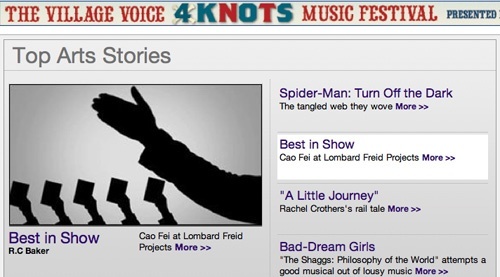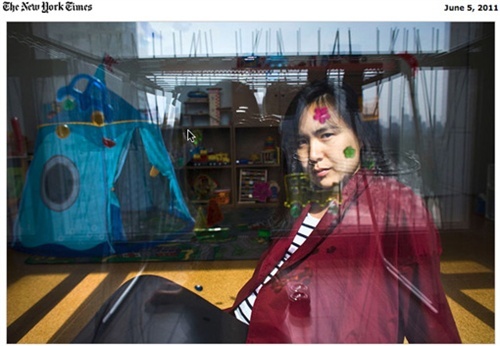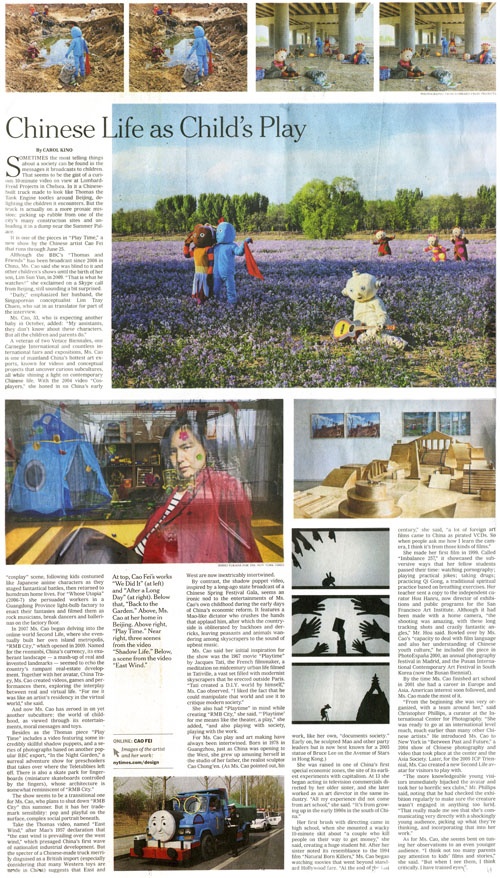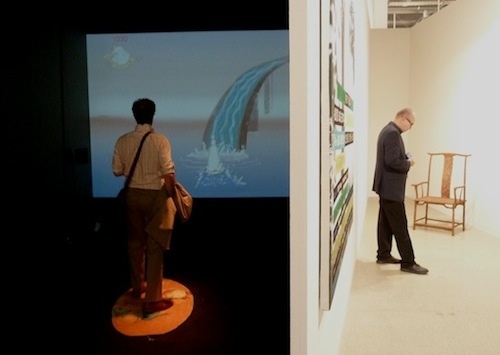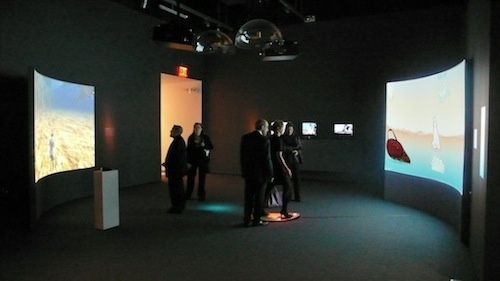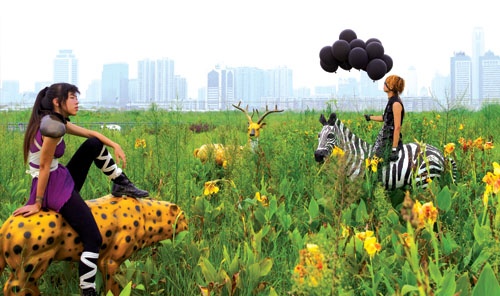A figure costumed in blue plush tends a fire under a highway overpass, soft red knobs sprouting from his beach-ball-size head. His companion's rainbow dreads droop over her purple face as she forlornly observes his labors. Amid the concrete pillars, similar creatures slump; nearby, a garbage bag overflows with gathered bottles and cans. Beijing-based Cao Fei's series of beautifully composed photographs transports these cartoonish characters, who normally frolic in the lush groves of the BBC children's show In the Night Garden, to the outskirts of modern China's jaggedly distributed economic miracle. Each tableau is hung with a twin that contains subtle compositional changes, enticing you to look closely, like a child playing "Spot the Difference." But instead of mismatched whiskers on a kitten, Cao pairs troupes of homeless playthings pushing shopping carts laden with refuse.
This theme of adulterated childhood continues in the video East Wind, which follows a dump truck with a facsimile of Thomas the Tank Engine's face bolted to its hood. The rig is loaded with debris and rumbles down crowded highways, eliciting smiles from young and old all the way to the dump. In the background, huge cranes create angled geometries in the sky, a motif echoed in the animation Shadow Life (2011), where the black silhouettes of hands and bent arms dig into an undulating horizon. Cao deftly shifts scale—are these shadowy forms strip-mining paradise, or is this a psychic surgeon dipping into a writhing patient? Fluttering wrists and fingers conjure birds, monkeys, and waving branches, while stiff palms outline bridges and form a bulldozer that flattens everything in its path.
Kids love animated costumes and anthropomorphized machines, and adults are happy to lose themselves in their children's whimsy. Cao's sharp-edged imagery cuts off such escape routes by lashing the candy colors and bulbous contours of the kiddie-industrial complex to narratives that uncover the rot intrinsic to excess.

